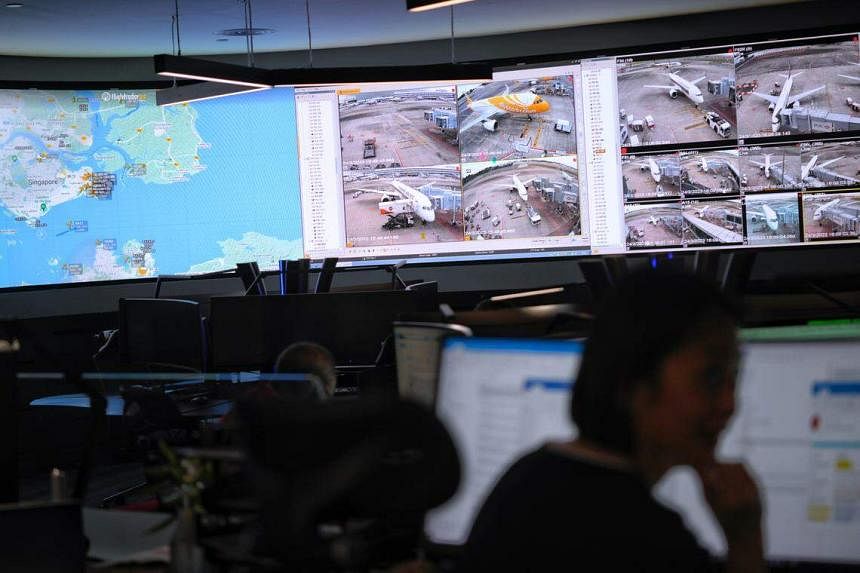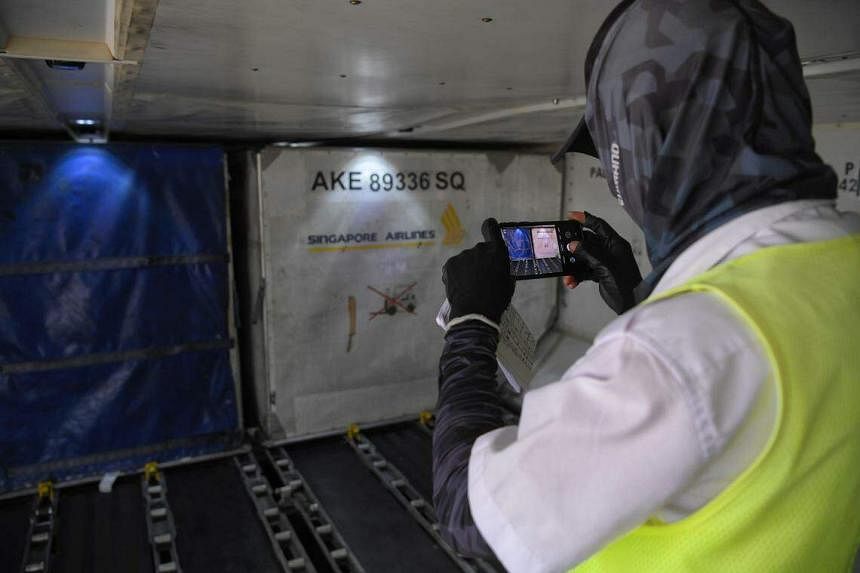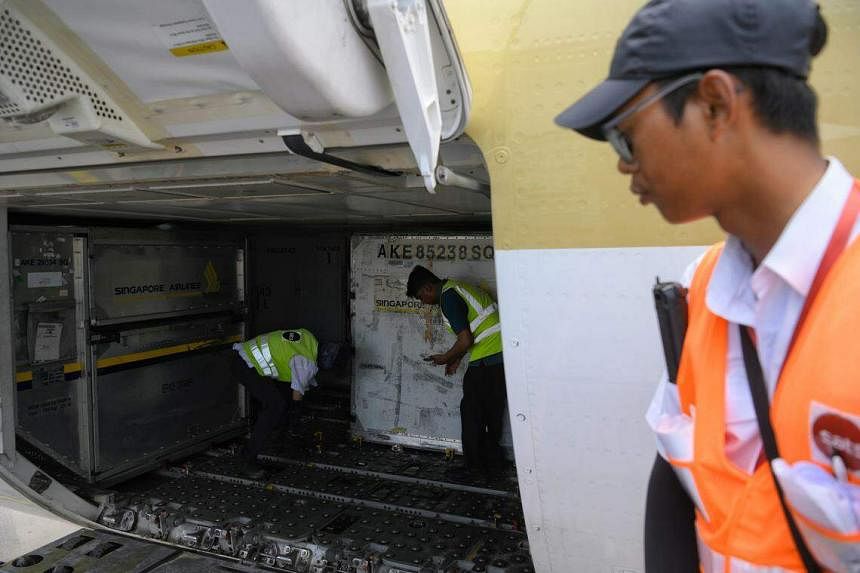SINGAPORE – It was 20 minutes before Singapore Airlines Flight SQ606 was due to depart Changi Airport Terminal 3 on March 24, and a precise routine involving man and machine was under way.
Like clockwork, containers holding checked luggage and other cargo – each weighing more than a tonne – were being loaded into the belly of a Boeing 787 that was about to leave for Incheon Airport in Seoul that afternoon.
Any slip-up could have led to a delay or, worse, disaster, so Mr Shaun Lim, a ground commander at ground handling company Sats, was on the tarmac to keep a lookout for hazards and unsafe moves.
Speaking to The Sunday Times after the flight to South Korea departed without a hitch at 2.35pm, the 26-year-old said: “Most of the time, our staff keep to the safety protocols. If they do not comply, we will remind them and escalate it to higher management.”
Mr Lim’s role as a ground commander is a fairly new one at Sats.
The company, Changi Airport’s main ground handler, introduced it in February 2021 as an additional layer to build a stronger safety culture and ensure airside activities adhere to standard operating procedures. There are currently more than 40 ground commanders in Sats’ ranks. The plan is to grow the team to about 60.
Since the introduction of this role, Sats said it has observed a significant drop in the number of safety breaches reported on the tarmac, such as workers driving too close to an aircraft or driving too fast in certain areas.
In February 2021, there were 481 instances of non-compliance observed for every 1,000 flights that Sats handled at Changi Airport.
By February 2023, this was down to 92 per 1,000 flights, despite flight volumes rising sharply after the lifting of Covid-19 border restrictions in 2022.
Passenger traffic at Changi Airport is now at about 80 per cent of pre-pandemic levels, with a full recovery expected in 2024 or earlier.
In 2019, before the Covid-19 pandemic, a total of 68.3 million passengers passed through Changi Airport.
The ground commanders also serve as an extension of Sats’ Integrated Operations Centre (SIOC), which is where the company’s activities at Changi Airport – from baggage handling and catering to the cleaning of aircraft cabins – are managed.
Mr Edwin Tan, head of SIOC and terminal services at Sats, said: “We realised that there was an opportunity to improve on safety at the aircraft bays, including ensuring that all aircraft, vehicles and staff working there remain safe. So we said, why don’t we have an extra pair of eyes on the ground to help.”

As airport operations started to ramp up in 2022, more staff also had to be hired and trained.
Mr Tan said: “When flights increased around April and June 2022, there was a period of adjustment because there were new people joining, and they needed time to learn and gain experience.”
Sats had cut its headcount from 17,155 to 11,345 over the course of the pandemic, which decimated the aviation industry.
But the company has been beefing up its ranks with the recent recovery in air travel.
As at February 13, 2023, the company employs 17,000 workers, just shy of pre-pandemic levels.
Technology to reduce human error that was put in place before Covid-19 has also proven to be crucial with flight volumes rising rapidly. For instance, equipment used to lift and load cargo into planes is installed with several fail-safes, including a radar system that automatically slows the machine down if it is going too fast, and proximity sensors that prevent collisions with aircraft.
Separately, an electronic system has been used since September 2019 to ensure baggage containers and cargo pallets on SIA flights departing from Singapore are loaded according to plan.
This step is crucial as any deviation could affect a plane’s centre of gravity during take-off and landing, impacting flight safety.
Previously, ramp loading officers supervising the loading of planes had to carry out checks and confirmations verbally by reading back the associated container or pallet number one position at a time to another Sats officer over a call.
With the electronic system, this is done through the scanning of barcodes, which makes the process smoother and more accurate.
Workers must also take photos to confirm that a container is locked into the right position, to prevent it from moving during flight, before the next one is loaded.

Mr Zulfadhli Jumari, 26, who was the ramp loading officer supervising Flight SQ606 on March 24, said: “The technology has been helpful. With the use of the electronic system, the process is way easier than voice read-backs.”
All told, it takes about an hour to load a plane the size of a 787.
Looking ahead, Mr Tan said Sats is looking to improve the way information is shared and used within the company and increase productivity.
“Most of the flights run like clockwork, but there are some exceptions. Sometimes, the flights arrive late, for example, and we may have to expedite the transfer of transit passengers and their bags to another departing flight. We are leveraging technology to further improve the efficiency, accuracy and timeliness of communications so that we can help such transit passengers connect seamlessly and safely while ensuring that the departing flight leaves on time,” he said.


